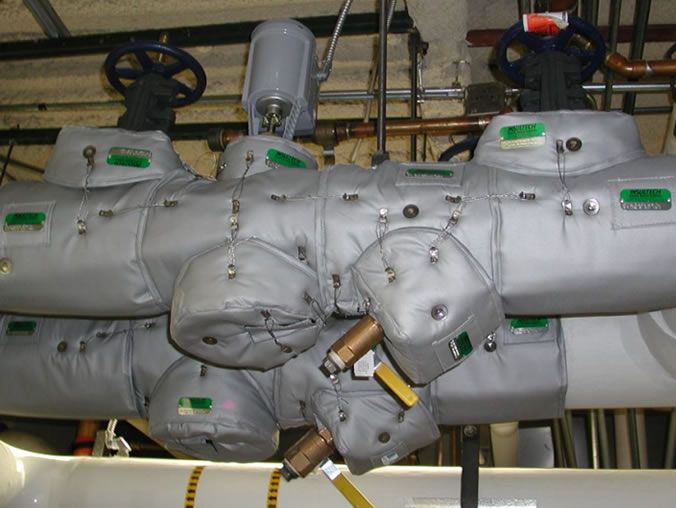A good insulation blanket is meant to keep elements in, like extreme heat, while also keeping people safe. But if a blanket is poorly fitted, many of those benefits go out the window. Fitting reusable insulation in a way that’s improper or simply haphazard will negatively impact an organization’s energy goals.Here are three, key ways that the benefits of reusable insulation blankets will be lost through improper fit.
“The number one issue with fit is reinstallation,” said Frank Kovacs, CEO of Shannon Global Energy. “With poor fit, materials are removed but not reinstalled because the quality of the fit is so poor that the reinstallation becomes cumbersome, difficult and problematic.”
Reinstallation
For many insulated systems, regular maintenance and inspection are imperative to properly continuing operation. In order to inspect these systems and components (e.g., gate valves, steam traps), workers must remove insulation. When an insulation maker ignores fitting reusable insulation correctly, maintenance workers will find it very hard to reinstall a blanket, and as a result, components may simply be left uncovered.
“I’ve seen pallets filled with blankets because the insulation was too difficult for workers to reinstall on the component,” said Kovacs.
Performance efficiency
If a blanket is fitted improperly, it’s likely to not fully perform to standards.
“If the blanket design is of poor quality, you could have hotspots or inefficiencies. Then the customer is not seeing the full benefit of the energy-saving investment,” said Kovacs.
For example, a poorly fitted blanket – one that’s designed without a CAD and CNC process or manufactured based on hastily measured components – will allow heat to escape from the hot components underneath. Over time, this costs a business money in lost energy. If a poorly fitted blanket leaves a dangerously hot pipe or valve exposed, workers risk a burn injury, which the company is liable for.
Blanket failure
A poor fit can cut the lifespan of the insulation blanket or even the component being insulated.
“When seams are poorly sewn or a blanket doesn’t match the geometry of the surface being insulated, there’s a potential for premature failure of the materials in the blanket,” said Kovacs.
Corrosion under an insulation blanket often occurs with outdoor application, or in facilities like food processing plants that experience washdown procedures.
“If you have a poorly fitted blanket, there’s a high probability that water penetration will eventually get to that surface,” added Kovacs. “There’s really no chance of correcting the problem without replacing the blanket with a product designed and manufactured to the correct standards and specifications.”
Properly fitting reusable insulation begins with the design process. With a carefully conducted energy survey that catalogs the components in need of insulation, an organization can ensure that its insulation blankets fit securely, are easily removed and replaced and last up to 15 years. For Shannon Global Energy, properly fitting reusable insulation includes tapping into the company’s library of more than seven million CAD files of components, which designers cross-reference to ensure a blanket perfectly fits its intended application.

